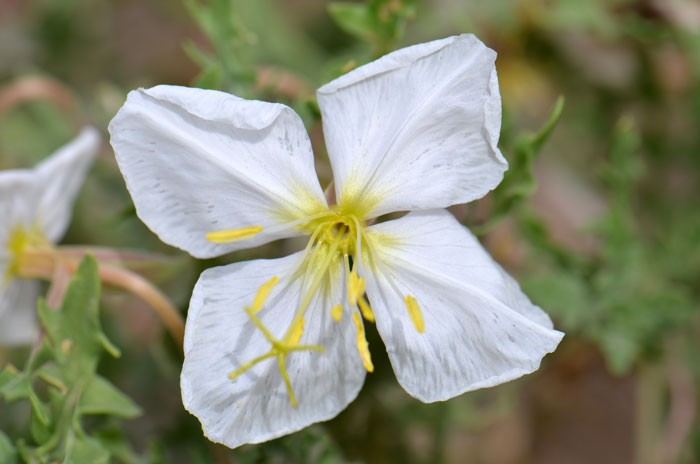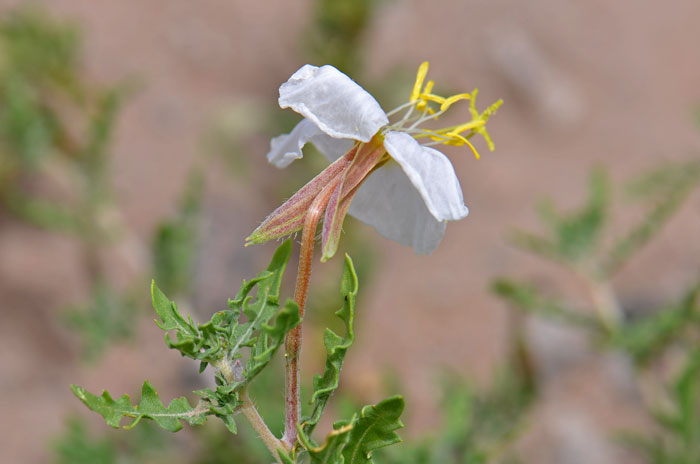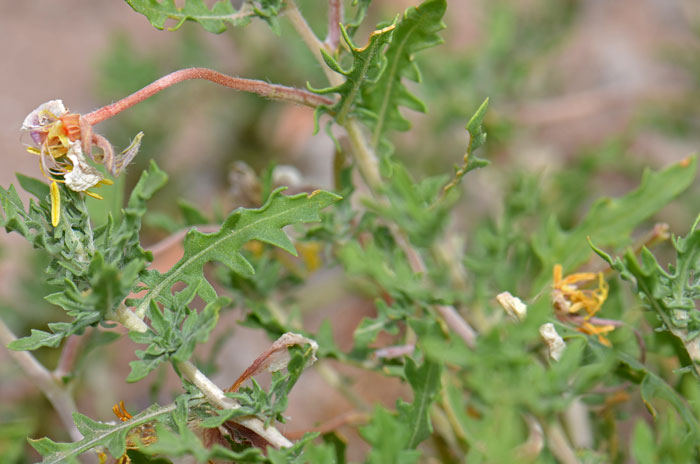Oenothera coronopifolia, Crownleaf Evening Primrose



Scientific Name: Oenothera coronopifolia
Common Name: Crownleaf Evening Primrose
Also Called: Comb-like Evening-primrose, Crownleaf Eveningprimrose, Crownleaf Evening-primrose
Family: Onagraceae, Evening Primrose Family
Synonyms: (Anogra coronopifolia)
Status: Native
Duration: Perennial.
Size: Up to 24 inches more or less.
Growth Form: Forb/herb; plants from slender underground rootstocks.
Leaves: Green; narrowly lanceolate, lobed.
Flower Color: White; large, showy from terminal axils, sepals reflexed, hypanthium with conspicuous white hairs in the throat, buds nodding; fruit a capsule up to ¾ of an inch long.
Flowering Season: June to August
Elevation: 5,500 to 8,000 feet.
Habitat Preferences: Dry soils on plains.
Recorded Range: Crownleaf Evening Primrose is found in the southwest states of AZ, CO, ID, KS, NE, NM, SD, UT, WY.
In Arizona it is found in the northern ½ of the state excluding Yavapai County, and in the southeast in Cochise County.
North America & US County Distribution Map for Oenothera coronopifolia.
U.S. Weed Information: No information available.
Invasive/Noxious Weed Information: No information available.
Wetland Indicator: No information available.
Threatened/Endangered Information: No information available.
The Plant List includes 706 scientific plant names of species rank for the genus Oenothera. Of these 150 are accepted species names.
Comments: Photographs above from specimens in New Mexico.
Also see in Southwest Desert Flora: Tufted Evening Primrose, Oenothera caespitosa; California Suncup, Oenothera californica; Velvetweed, Oenothera curtiflora; Dune Evening Primrose, Oenothera deltoides; Hooker's Evening Primrose, Oenothera elata; Large Yellow Desert Primrose, Oenothera primiveris; Rose Evening Primrose, Oenothera rosea; Mexican Evening Primrose, Oenothera speciosa and Scarlet Beeblossom, Oenothera suffrutescens.
Crownleaf Evening Primrose has been used as an analgesic aid (Navajo, Ramah Drug), gastrointestinal aid (Navajo, Ramah Drug)and externally as an anti rheumatic aid (Zuni Drug ). See ethno-botanical uses at Native American Ethnobotany, University of Michigan, Dearborn.

